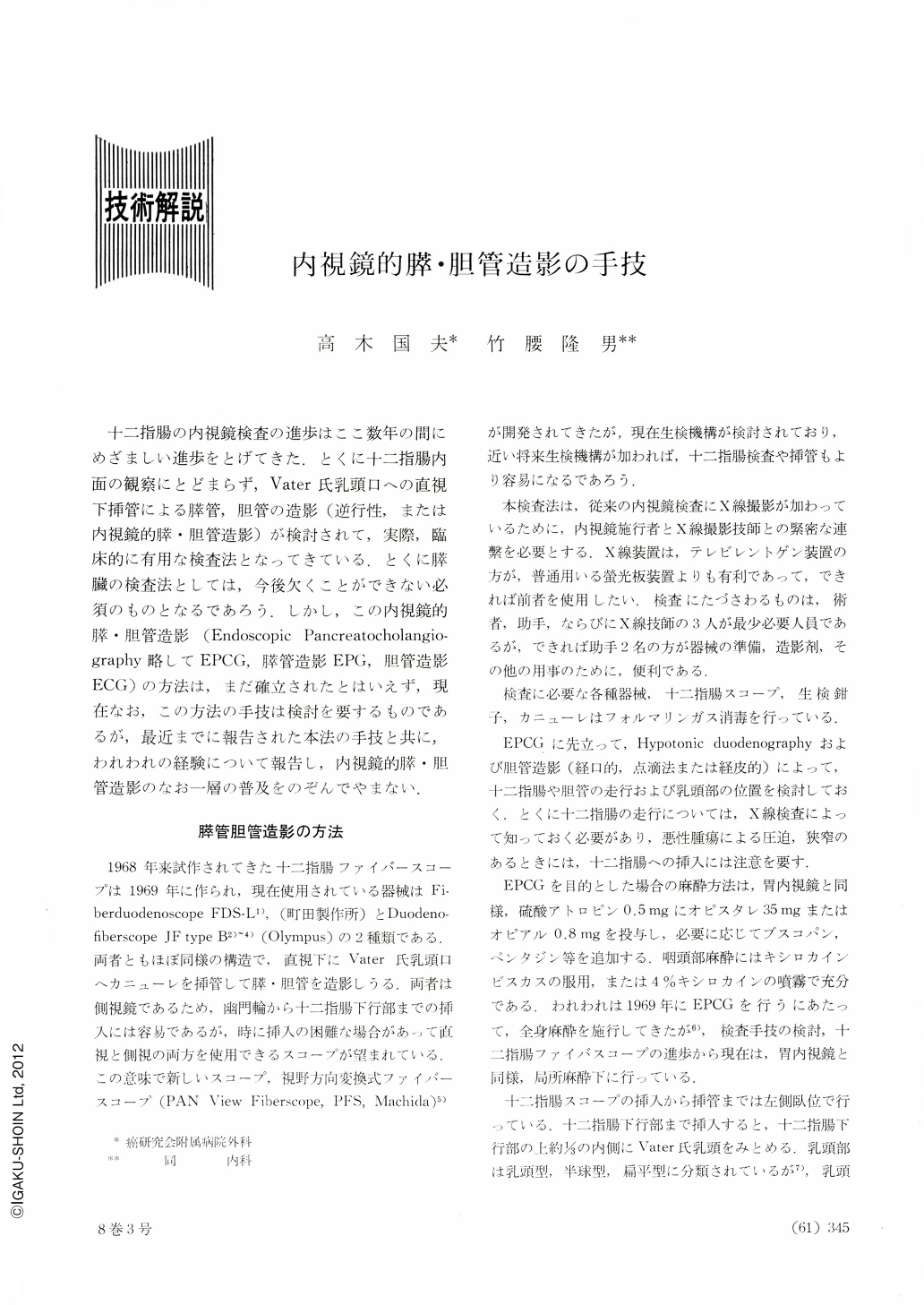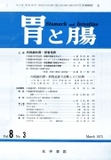Japanese
English
- 有料閲覧
- Abstract 文献概要
- 1ページ目 Look Inside
十二指腸の内視鏡検査の進歩はここ数年の間にめざましい進歩をとげてきた.とくに十二指腸内面の観察にとどまらず,Vater氏乳頭ロへの直視下挿管による膵管,胆管の造影(逆行性,または内視鏡的膵・胆管造影)が検討されて,実際,臨床的に有用な検査法となってきている.とくに膵臓の検査法としては,今後欠くことができない必須のものとなるであろう,しかし,この内視鏡的膵・胆管造影(Endoscopic Pancreatocholangiography略してEPCG,膵管造影EPG,胆管造影ECG)の方法は,まだ確立されたとはいえず,現在なお,この方法の手技は検討を要するものであるが,最近までに報告された本法の手技と共に,われわれの経験について報告し,内視鏡的膵・胆管造影のなお一層の普及をのぞんでやまない.
Endoscopic pancreatocholangiography recently exploited is now a most effective diagnostic method in diseases of the pancreas and biliary tree. Technically, it is most important to view the papillary orifice squarely en face. After its cannulation, 5 ml of Urografin (60 per cent) is needed to visualize the pancreatic duct, and for the bile duct 20 to 40 ml of it must be injected. The rate of success in visualization of these ducts is 70 to 80 per cent; it is slightly higher in the pancreatic duct. We have studied various ways to get better results for the bile duct.
The extent of the pancreatic ducts to be opacified should be limited to the major duct and its branches. For means of making acini radiopaque, some safe method must be worked out.
Although endoscopic pancreatocholangiography is now a most reliable method, serious complications are at times reported, so that one cannot be too careful when constriction of the pancreatic or the bile duct is suspected. It should be mentioned here that this method can also be employed in patients gastrectomized according to the Billroth Ⅱ method.

Copyright © 1973, Igaku-Shoin Ltd. All rights reserved.


